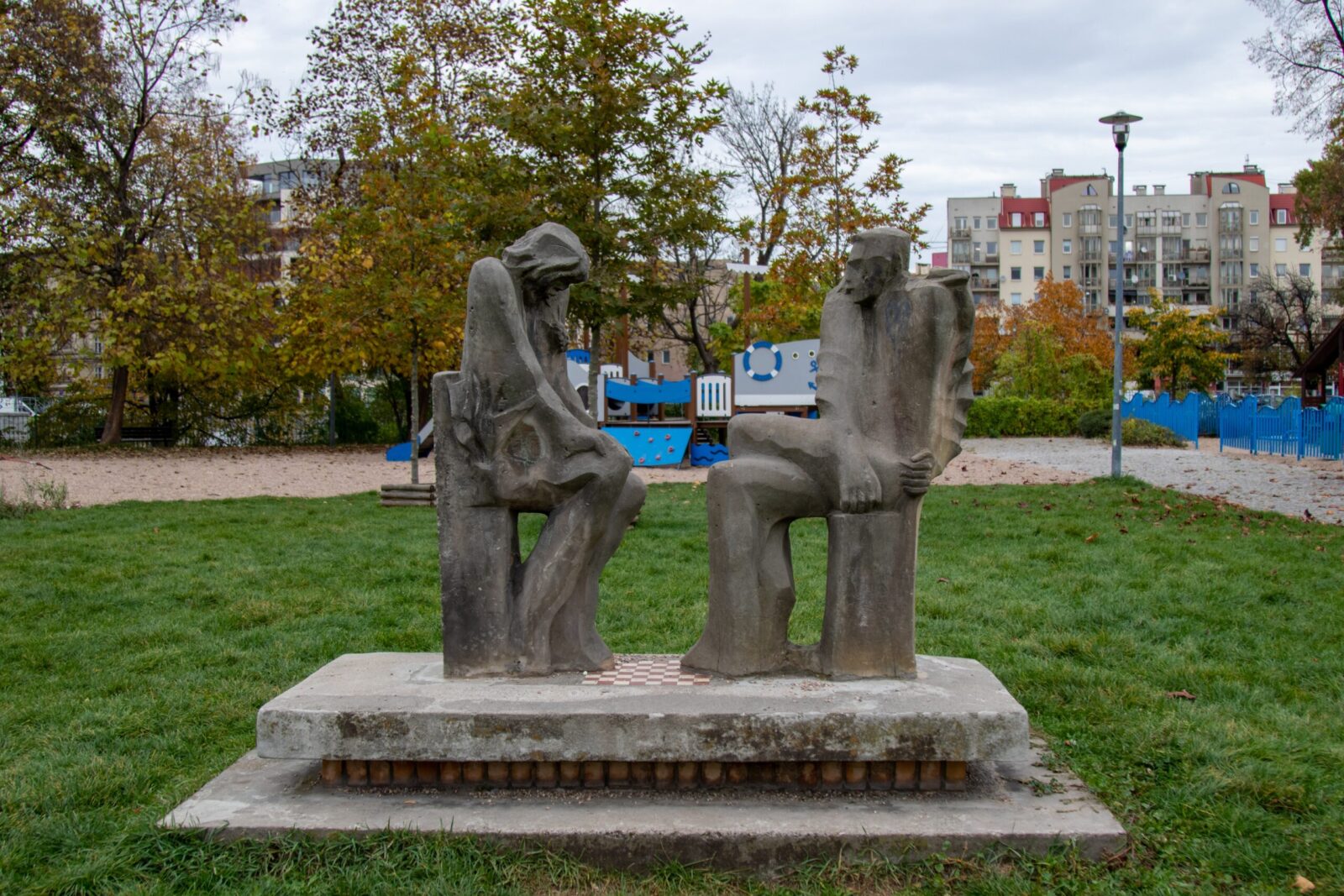Strengthening strategic communication in Poland amidst new threats
The landscape of strategic communication in Poland has evolved significantly, spurred by the emergence of digital threats and the geopolitical tensions plaguing Europe and NATO’s Eastern Flank especially. As Poland grapples with the shadow of Russian aggression, the need for a cohesive and effective approach to strategic communication has never been more pressing.
March 1, 2024 -
Maciej Makulski
-
Articles and Commentary

A sculpture by Łucja Skomorowska of a man and a woman playing chess in Wrocław. Photo: Shutterstock
The foundation of Poland’s strategic communication efforts is rooted in both international frameworks, particularly those established by NATO, and domestic strategies tailored to address unique national security concerns. However, while the theoretical groundwork exists, the practical implementation and coordination of these efforts leave much to be desired.
At the heart of Poland’s strategic communication infrastructure lies a complex network of governmental agencies, military branches, civil service groups and non-governmental organizations. Each entity operates within its own sphere of influence, often lacking the necessary coordination and synergy crucial for a unified communication strategy.
The 2022-23 incident involving a Russian missile found near Bydgoszcz illustrates the deficiencies in Poland’s strategic communication apparatus. The delayed discovery of the missile, coupled with a subsequent public spat between the defence ministry and the operational commander, General Tomasz Piotrowski, as well as the General Staff of the Polish Armed Forces, exposed the key shortcoming stemming from a lack of coordination concerning “StratCom”. Instead of projecting strength and unity in the face of adversity, Poland’s response descended into confusion and disarray, eroding public trust in the country’s security institutions and resulting in the resignation of the highest commanders of the country’s armed forces.
Central to the challenge is the absence of a clear and comprehensive doctrine guiding strategic communication efforts at the national level. While individual agencies and departments may possess their own mandates and strategies, the lack of overarching coordination impedes effective communication and responses during times of crisis.
Moreover, the discourse on strategic communication remains predominantly confined to the political-military domain, overlooking the potential contributions of civil society and non-governmental organizations. These grassroots organizations, equipped with valuable insights and networks, have the potential to enhance societal resilience and amplify communication efforts beyond traditional channels.
To address these shortcomings and fortify Poland’s strategic communication framework, concerted efforts must be made at both the institutional and societal levels. Firstly, there is an urgent need for greater inter-agency collaboration and alignment of objectives, facilitated by the establishment of clear lines of communication and the delineation of responsibilities. Furthermore, the inclusion of civil society actors in the strategic communication discourse can inject fresh perspectives and foster community engagement.
Crucially, a robust and resilient strategic communication strategy must prioritize transparency, coherence and responsiveness. Clear channels of communication with the public, including active engagement on social media platforms, can enhance trust and confidence in government institutions while countering disinformation and propaganda.
Moving forward, Poland must seize the opportunity to recalibrate its approach to strategic communication in line with evolving threats and challenges. This necessitates a paradigm shift towards a more inclusive and collaborative model that harnesses the collective strength of all stakeholders.
In conclusion, the process of strengthening strategic communication in Poland is fraught with challenges but also brimming with potential. By embracing innovation, fostering collaboration and placing a premium on transparency and accountability, Poland can chart a course toward a more secure and resilient future. In the face of mounting threats and uncertainties, effective strategic communication emerges as a linchpin of national security and cohesion, deserving of unwavering attention and investment.
This article is based on the report “Assessment of strategic communication structure in Poland and its potential”, which has been prepared with the support of the International Republican Institute’s Beacon Project
The opinions expressed in this article and in the report are solely those of the author and do not reflect those of the IRI.
Maciej Makulski is a contributing editor with New Eastern Europe.
Please support New Eastern Europe's crowdfunding campaign. Donate by clicking on the button below.

































